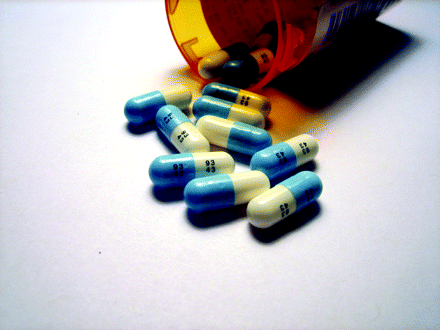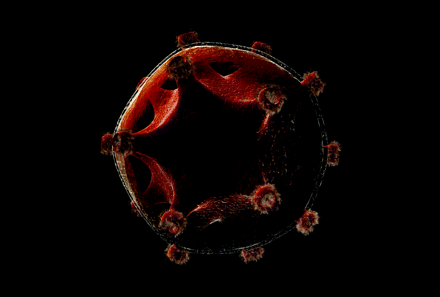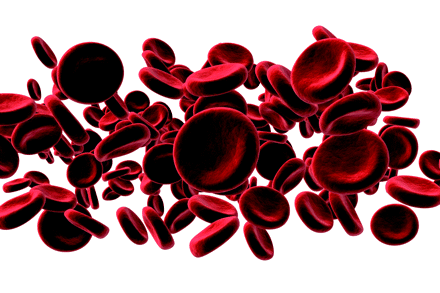1981–1990
Startin’ Somethin’

In the years from 1981 through 1990, home entertainment intensified through television, computers, and video games. A new cable television station called MTV began to showcase music videos in 1981, and fans in living rooms across the nation began to expect their musicians to produce videorecordings and concerts with visual impact. Michael Jackson ignited his solo career by catching on to the power of MTV and used the platform to sell 104 million copies of his epic Thriller album, released in 1982. In 1983, Kary Mullis, a biochemist at Cetus Corp. in Emeryville, California, created a groundbreaking bestseller of a different sort, which would become a staple for doctors and scientists working in every venue from crime labs to maternity wards. His technique, the polymerase chain reaction, or PCR, allowed the amplification of a single strand of DNA into amounts sufficient to analyze crime scenes and diagnose disease as never before. The popular media also played a part in igniting the success of a new class of drug antidepressants. Eli Lily introduced the Prozac to the market in 1988, the selective serotonin reuptake inhibitor (SSRI) developed by pharmacologist Ray Fuller and his colleagues.

Not My Problem

In response to increased supply and declining prices for cocaine, savvy drug dealers combined smaller amounts of pure drug powder with various chemicals to create tiny crystallized rocks that could be smoked through a pipe. The effects of this new, cheap, and highly addictive form of cocaine were catastrophic for inner cities, with drug dealers resorting to violence to protect profits and crack users committing crimes to support their addiction. Whereas the crack epidemic seemed confined to inner cities, the AIDS crisis had a much broader influence. Like crack, acquired immune deficiency syndrome, first reported in the US in 1981, seemed to affect a subpopulation, in this case homosexual males. Soon it was clear that infection could spread by infusion of contaminated blood, needle-sharing, and otherwise by transmission of body fluids. With a mortality rate of nearly 40% and rising, the need for prevention and education about AIDS and HIV became paramount in the medical community.

Intelligent Design
The first drug approved for the treatment of HIV was azidothymidine (AZT), discovered in 1985. An inhibitor of reverse transcriptase, AZT was found to impede viral replication. The concept of battling viruses by relying on the viral metabolic machinery itself to process nucleoside analogs was pioneered by Gertrude Elion and George Hitchings, recipients, along with Sir James W. Black, of the 1988 Nobel Prize. The award recognized the evolution of rational drug design strategy and the vital synergy of pharmacology with cellular and molecular biology. Elion and Hitchings exploited the differences in nucleotide metabolism between normal human cells and cells from tumors, viruses, and bacteria. Among their discoveries, which spanned the better part of forty years, was acyclovir, an acyclic guanosine nucleoside analog approved in 1981 for treatment of the herpes virus. They showed that acyclovir halted growth of the virus by serving as a substrate specifically for herpes thymidine kinase and DNA polymerase. The compound was not recognized by the mammalian forms of either enzyme and was thus adopted for long-term human use.

Self Destruction
Elion and her contemporaries exploited the internal machinery of viruses to sabotage their survival. Destruction from within was also a political theme, which was especially played out in the fall of the Berlin Wall. On November 9, 1989, East German citizens, reacting to political events that had weakened the conceptual Iron Curtain, scaled the literal Wall that had surrounded West Berlin, and in the following days, joyous visitors, from East and West, chipped and bashed away at the barrier. The reunification of Germany ensued at a surprising pace, and pieces of the Wall became common in souvenir shops, even in the US, and were sold as a vestige of the Cold War now won.
Pharmacological Amplification
The 1980s introduced a new focal point in pharmacological research, particularly the area devoted to cell signaling. The study of receptors and their ability to respond to extracellular signals was coming to fruition, following the advent of radioligand binding assays that had begun in the 70s. “Second messengers,” intracellular molecules generated in direct response to the binding of ligand to receptor, also became a major topic of interest. But Martin Rodbell and Alfred Goodman Gilman’s spectacularly advanced our insights into the mechanism through which the binding of hormones and other molecules to the exterior cell surface is “transduced” as a signal that changes some aspect of intracellular metabolism. Signal transduction through G proteins, named not after Gilman but rather their specificity in binding guanine nucleotides, earned Gilman and Rodbell a Nobel Prize, awarded in 1994. Gilman had been named after the two authors of the essential textbook Goodman and Gilman’s the Pharmacological Basis of Therapeutics, which would perhaps seem fanatic if it weren’t for the fact that he was the son of coauthor Alfred Gilman.

- © American Society for Pharmacology and Experimental Theraputics 2008



